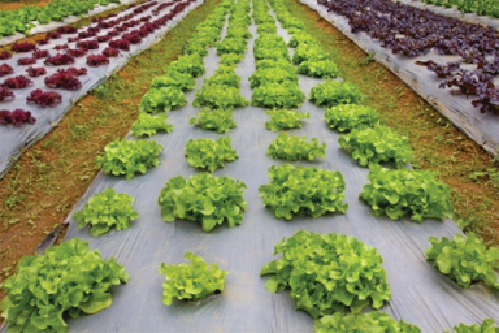Environmental Engineering Reference
In-Depth Information
aseugenol)canbeincorporatedintoplasticpackagingtohelpdelayripening
of fruit (Serrano et al., 2008).
Unlike with paper packaging, microbial passage across a nonporous plastic
package is not possible. Equal microbial protection is offered by metal cans
(Ahmed Idris and Alhassan, 2010) or glass bottles. Yet, the lightweight, low
cost, convenience of use, design freedom and lack of potential hazard in use,
generally make plastics the more desirable packaging material.
5.3 PLASTICS IN AGRICULTURE
Modern agricultural practices as well as food processing (more than 75%
of grown food is processed prior to consumption) are particularly
energy-intensive processes. They also result in serious water and air
pollution in addition to carbon release into the environment. With food
production being such a critical need, inefficient expenditure of energy,
and the large environmental footprint of the food industry, is acceptable to
the society. But any technologies that extend the growing season, reduce
leaching of fertilizer, encourage early harvests, and increase the yield of
produce (Li et al., 1999) are aggressively pursued. Plastic mulch films and
Figure 5.3
Plastic films used as mulch in agriculture.
Mulch (soil cover) is used in arid and semiarid zones to conserve water used
in irrigation (Li et al., 2008). Plastic mulch is lightweight and nonporous

